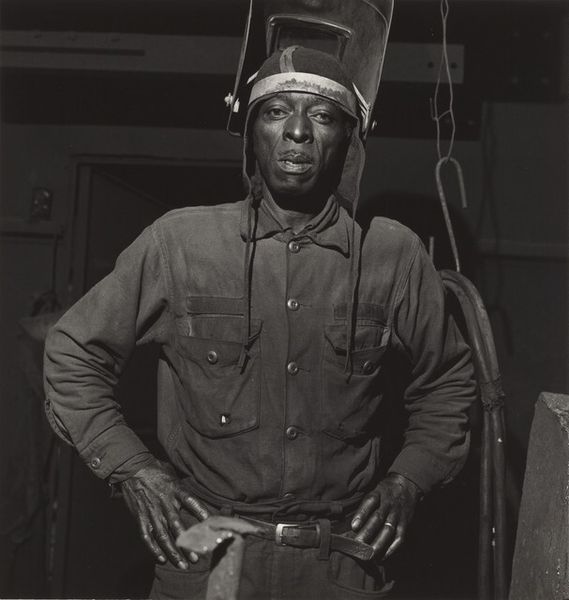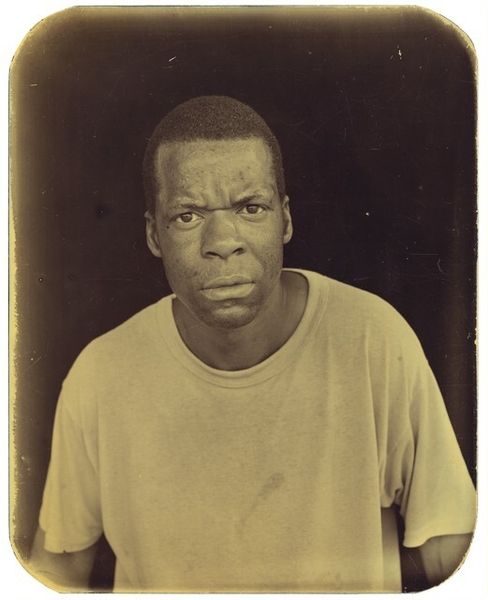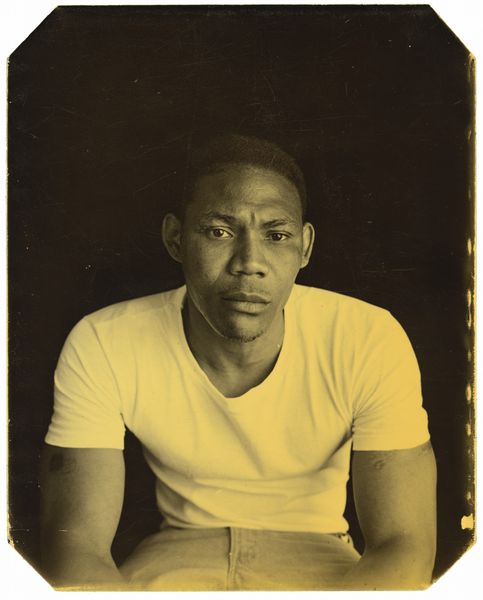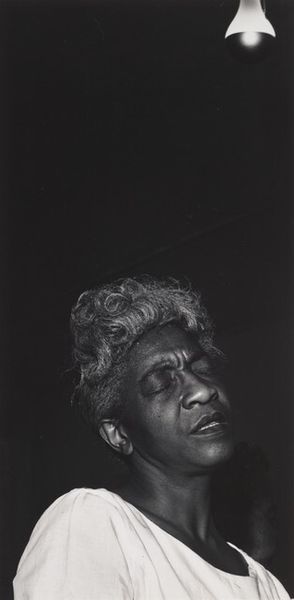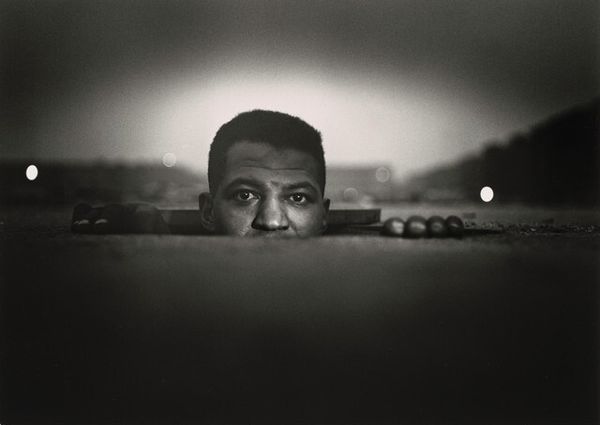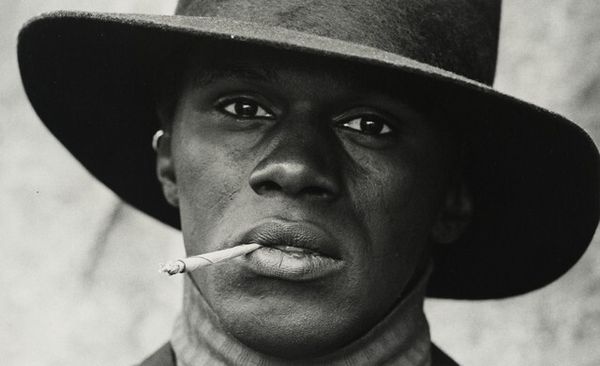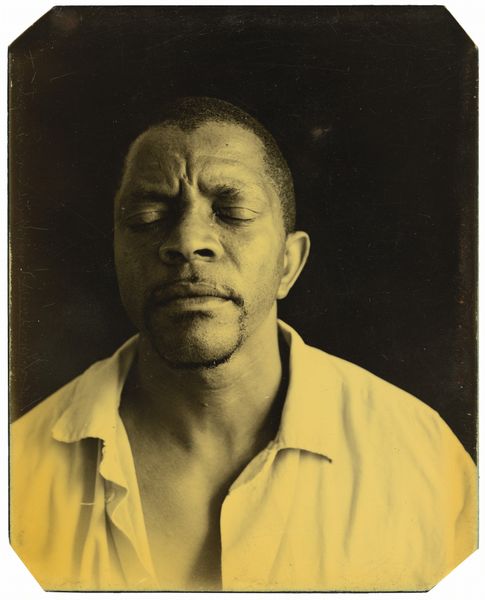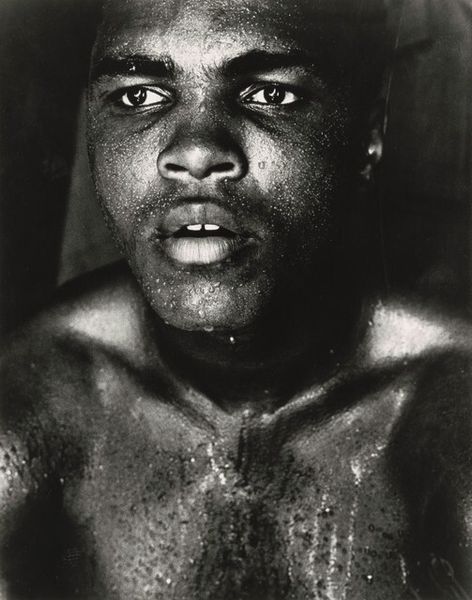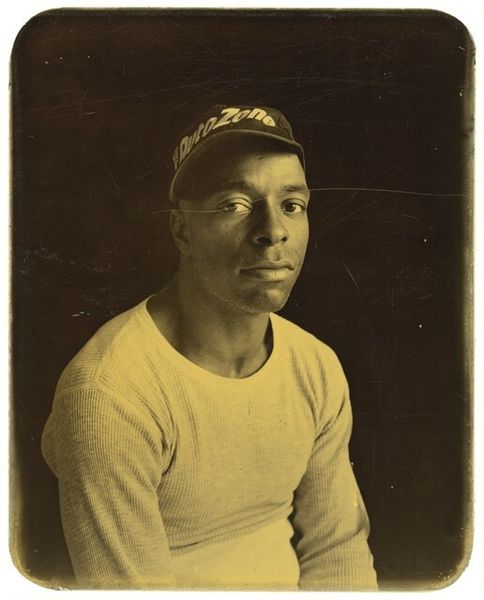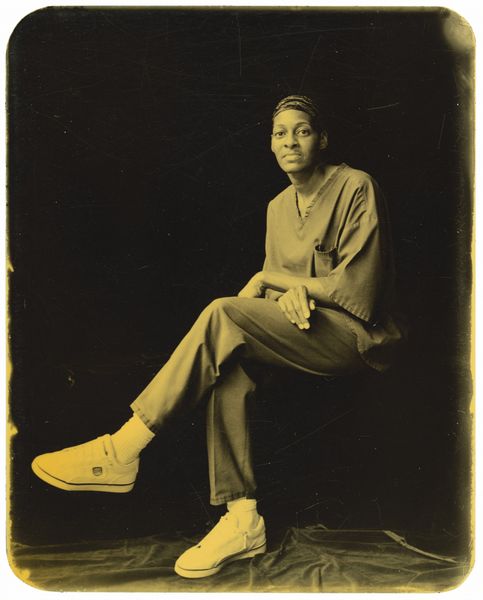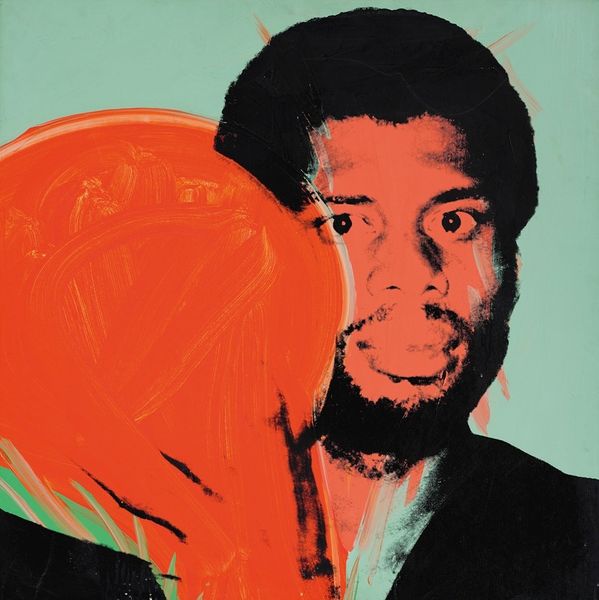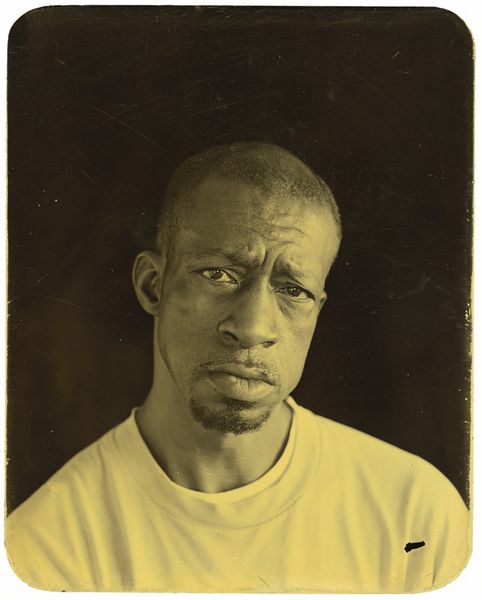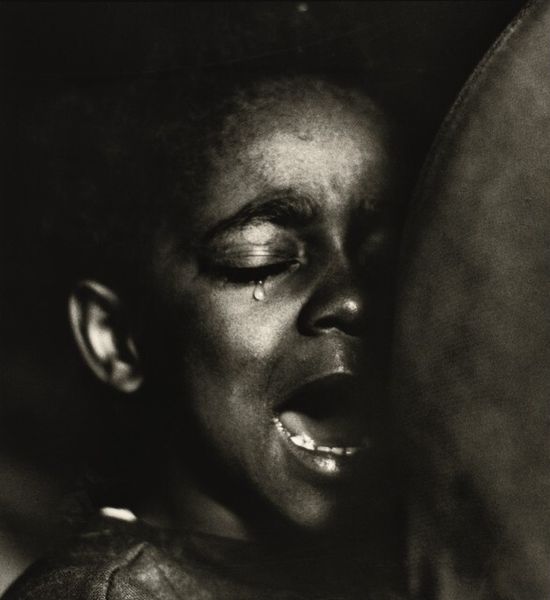
Dimensions: support: 340 x 341 mm
Copyright: © Robert Mapplethorpe Foundation | CC-BY-NC-ND 4.0 DEED, Photo: Tate
Editor: We're looking at Robert Mapplethorpe's photograph, "Bob Love." It's a striking black and white portrait, and the subject's gaze is intense. What do you see as the most compelling element in this composition? Curator: The interplay of light and shadow is paramount. Mapplethorpe masterfully utilizes chiaroscuro to sculpt Love's features, emphasizing the textures of skin and hair. Observe how this technique enhances the subject's inherent muscularity and strength, and leads the eye across the image. Editor: So, it's the formal elements that really drive the photograph's impact. Curator: Precisely. The careful orchestration of tonality and form transcends mere representation; it elevates the portrait to a study of abstract values and shapes. It is about the formal relationships, not the subject. Editor: I see, focusing on the how, not the who. Thanks, that's given me a whole new perspective on it. Curator: My pleasure. Considering the formal qualities can open new avenues of appreciating the artwork.
Comments
Join the conversation
Join millions of artists and users on Artera today and experience the ultimate creative platform.
tate 6 months ago
⋮
This black and white photograph features the model Bob Love in a close-up, three-quarter profile. The frame is cropped so that only Love’s head and shoulders are visible, filling the frame as he turns his head to the right, his eyes fixed on the camera lens. The photograph exploits deep contrasts of light and shade, with a particularly stark difference between parts of the face and shoulder – which show a reflective sheen – and the darkness of the neck and back and top of the head. The photograph is one of several Mapplethorpe produced with Love as the subject. Another of these, taken in the same year as Bob Love and given the same title (Tate AR01140), depicts Love naked upon a pedestal, with his legs spread and his penis on display. Both works demonstrate the artist’s concern to portray the sculptural beauty of the human form. The contrasts of light and shade appear to give the sitter’s body the permanence and lustre of a classical bronze statue.
